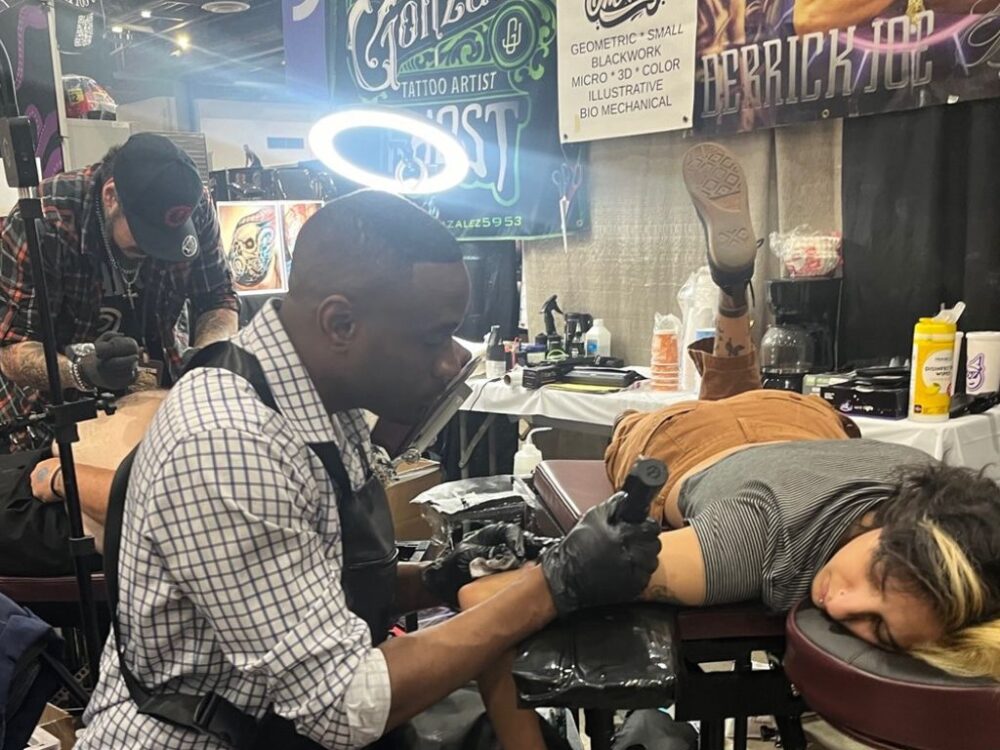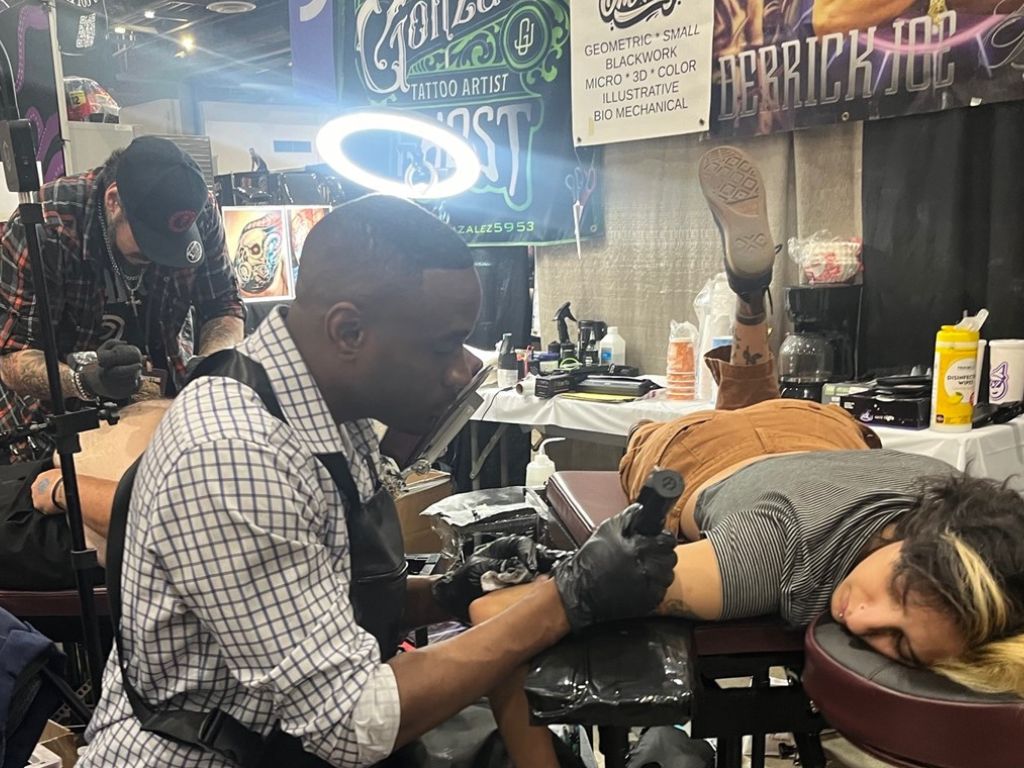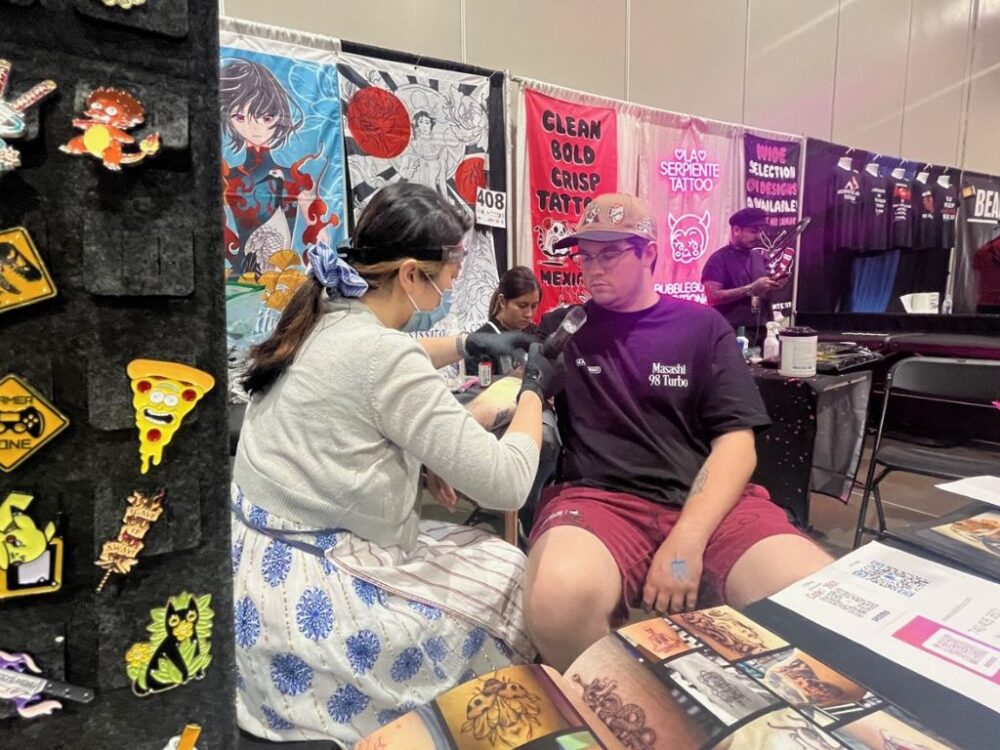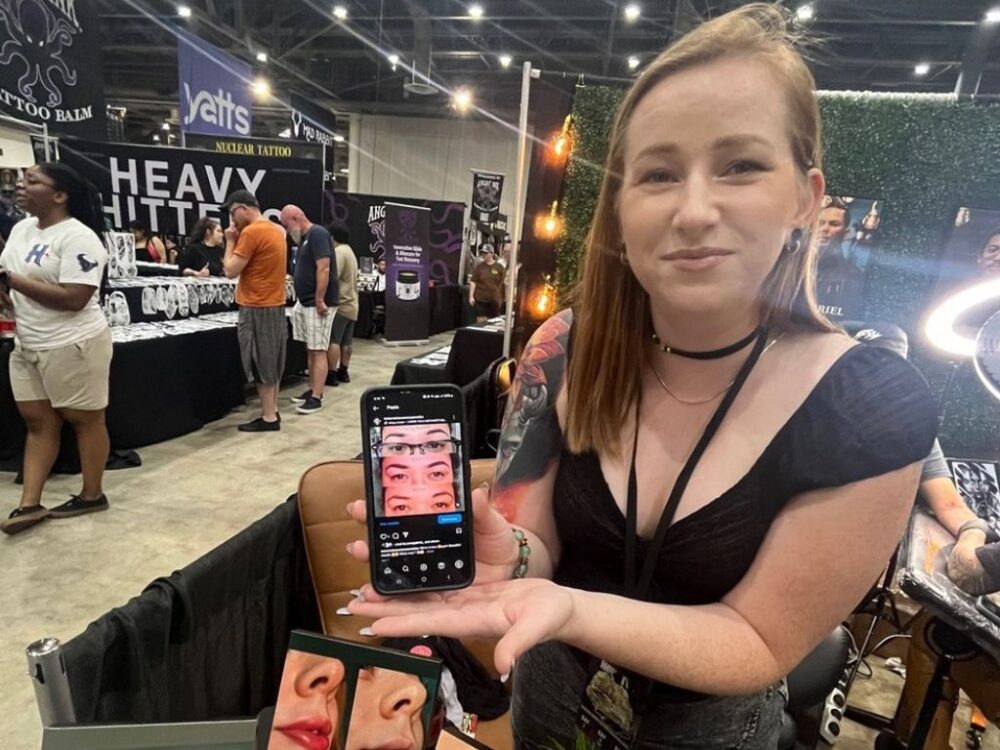 Tattoo artist Derrick Joe works on a client at the Villain Arts 7th Annual Houston Tattoo Arts Festival
Tattoo artist Derrick Joe works on a client at the Villain Arts 7th Annual Houston Tattoo Arts Festival
Tattoos have always been a part of human culture, with some examples dating back thousands of years. A recent Pew Research Center survey found that nearly a third of Americans have tattoos. Over the past 20 years, shifting attitudes and a surge in interest have fueled the growth of tattoo culture, and Houston’s scene has grown right along with it.
Houston Matters producer Brenda Valdivia met the new wave of artists working in the industry at the Villain Arts 7th Annual Houston Tattoo Arts Festival. She also spoke with Dr. Oyetewa Asempa, Director of the Skin of Color Clinic at Baylor College of Medicine, on how to keep tattoos fresh and the skin they’re inked on healthy. You can hear those conversations in the audio above.

Brenda Valdivia/Houston Public Media
Dr. Oyetewa Asempa, Director of the Skin of Color Clinic at Baylor College of Medicine, discusses how to keep tattoos fresh and healthy.
Things to Keep in Mind to Keep Your Tattooed Skin Healthy and Fresh
Red tattoo ink is the most likely color to trigger an allergic reaction—sometimes even weeks or years after getting the tattoo—especially for individuals who begin antiretroviral treatment for HIV or undergo joint replacement surgery, according to Dr. Asempa. She recommends checking the tattoo parlor’s hygiene practices, reading online reviews, and asking trusted friends for artist recommendations before booking an appointment
Things to Avoid:
-
Swimming or sweating soon after getting a tattoo until it fully heals
-
Repeated exposure to UV light, such as direct sunlight
-
Using petroleum-based products on your skin. Use water-based lotion instead
-
Tattooing over moles or areas of skin with a high concentration of moles
“Tattoos are obscuring moles and we can’t properly evaluate them,” Dr. Asempa says. “We can’t see if they’re changing color, then people may get a delayed diagnosis of melanoma, which is the deadliest form of skin cancer.”
While precautions are important, many people enjoy their tattoos and the camaraderie tattoos foster within their communities. Dr. Carl Blasphemy, master of ceremonies and host for Villain Arts at the Houston Tattoo Arts Festival, shared: “My wife has the coordinates and time of when we got married tattooed on her arm, along with the date in Roman numerals. You really can’t tell what it is unless you ask her about it, because people want to share the story behind their tattoos.”
While some tattoos are bright, colorful works of art, others serve practical purposes, such as permanent makeup. These include eyebrow tattoos and permanent lipstick, as explained by Samantha Aquiningoc of Immortal Essence Cosmetics: “Often, it’s more mature clients who have thinning brows or clients who want full color on their lips.”
Tattoo Artists and Festival Organizers Featured:



